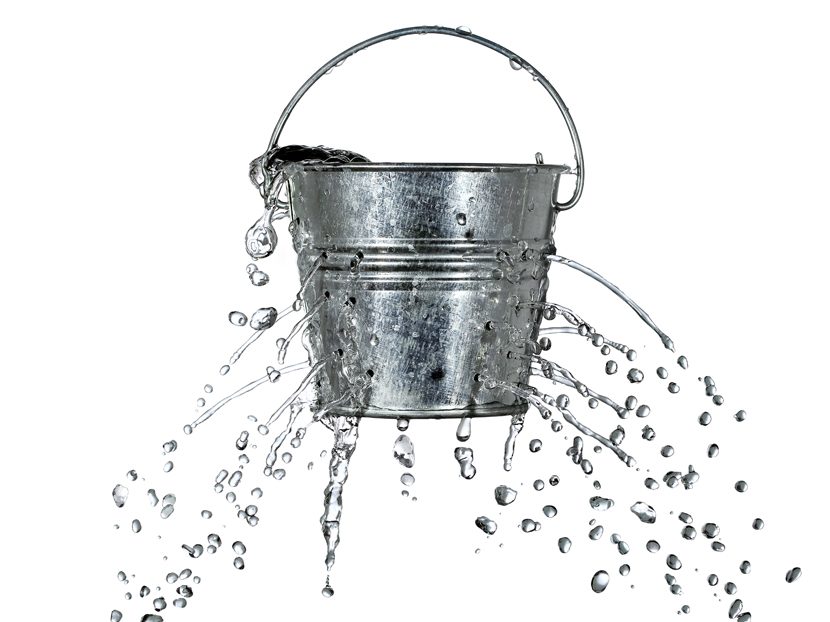Water and My Pipes, Yikes!
Many experts will admit not all is yet known when it comes to treatment blends, their reactions with one another and piping material compatibility.

You do not need to look or read too far these days to come across potable water quality discussions. The topic of water quality comes up more and more often on industry chat groups.
It’s not a new concern. I have back issues of various trade magazines with water quality articles dating back to the 1990s. The concerns about water quality come back around when piping and fittings start failing or a catastrophic health issue arises.
Lately, both have been on the front pages. The situation in Flint, Michigan, certainly was a wake-up call for water-related problems. But that was one big issue that began a couple of years ago in one specific area.
Search around online, however, and you will find issues currently with copper pin holes in areas of Long Island, various California locations, Maryland and more. These posts include news from homeowner’s associations, lab testing, class action lawsuits, piping manufacturers and also plumbing companies that specialize in repiping. News stations also have numerous exposes on the problems posted online.
Plenty of causes.
Water quality is often the first suspect when a large number of failures appear in one area or subdivision. Excessive water velocity is another possible cause. One research lab suggests a limit of 8 feet per second for cold water, not to exceed 5 fps for hot water.
That is a common velocity suggested in codebooks and CDA literature. Unreamed copper combined with high flow velocity can exacerbate erosion corrosion. The small internal lip left from using a tubing cutter sets up turbulent conditions. Add aggressive water and high total dissolved solids, and you have a mini sand blaster inside your piping. Improper electrical system grounding can also contribute to copper pinhole problems as well as excessive solder flux.
We had high failure rate with type K copper laterals that were installed in a subdivision that was built on old mine tailings. The aggressive soil and moisture would erode pin holes in the tube within several years of installation. The entire complex was repiped with PE tube.
Another possible cause is chemical-related. The chemical blends being used today to assure water is safe for consumption may be more aggressive to copper under certain conditions. Research results from yet another blog post suggest chloramines and sulfites may be partially to blame.
Water quality is a true and complex science. There are so many variables when all the above factors are combined or mixed in different proportions. Many experts will admit not all is yet known when it comes to treatment blends, their reactions with one another and piping material compatibility.
Surface water seems to be the toughest to treat and meet safe drinking water specifications. In addition to the minerals in the ground the water touches, airborne contaminants, deicer chemical run-off and waste water dumping also has an effect.
Research from the University of Michigan and Associate Professor of Civil Engineering Terese Olson suggests switching source water and treatment options led to the Flint crisis.
The new source water and different chemicals used to treat the new source cleaned away the mineral build up inside old piping. The mineral coating protected the lead and copper from leaching into the water. Meanwhile, water from the Flint River is naturally high in corrosive chlorides. Once the protective mineral build up was removed, the more aggressive water started leaching the copper and lead. A combination of treatment changes all combined to create the perfect storm in Flint.
Coagulants are also added to help particle removal. Different blends of these chemicals may also react with piping and other treatment chemicals. These chemicals need to be selected and blended to the requirement of the water.
A water expert analyzes the water and prescribes a treatment, not unlike your healthcare provider. In many areas, multiple sources of water are used and each may require different treatment chemicals and procedures. Furthermore, water quality from a source can change throughout the year based on rainfall, runoff, and the water table in the deep well aquifers. So ongoing analysis and treatment adjustment is required. Certainly having a staff trained and knowledgeable in all the varying conditions is critical.
It’s all piping.
I don’t mean to single out copper tube. I use copper on a regular basis, and it is still the main piping material for plumbing and hydronic installations.
All piping materials can have problems with water and the chemicals used to treat it. Brass has been known to zincify under aggressive water conditions. Early PEX systems were sensitive to constant recirculation of hot chlorinated or super-chlorinated water. The PVC piping in my former pool filtration became brittle after 10 years in service and would shatter like glass. There are questions about the plasticizer components leaching from plastic or composite piping.
If you’re on a regulated public water system, you should have access to their testing data. At some point, it takes an expert or chemist to understand the chemicals and reactions they have with one another and your piping material.
If you are concerned or are having failures in your piping systems, find an independent lab to perform a test. The University of Michigan got involved in the Flint crisis and did some excellent forensic work.
Keep in mind that most any undesirable water issue can be treated and mitigated. I have seen sewer treatment plants provide drinking quality water at their discharge. When I lived with publically treated water, I always added a taste and odor filter to my drinking water taps. Chlorinated tea and coffee does have a unique and unusual taste, to me at least.
Also, take into account the people responsible for the chemical use at the plant and the condition of the dosing equipment. I would hope there is an ongoing educational program for the people involved in public water business.
This all makes me wonder if the perfect piping material yet exists for all the known, unknown, current and upcoming qualities of water.
I recall working with my dad as a plumbing apprentice many moons ago. We did the plumbing for a new home on the shore of Lake Erie and the homeowner wanted all galvanized water.





